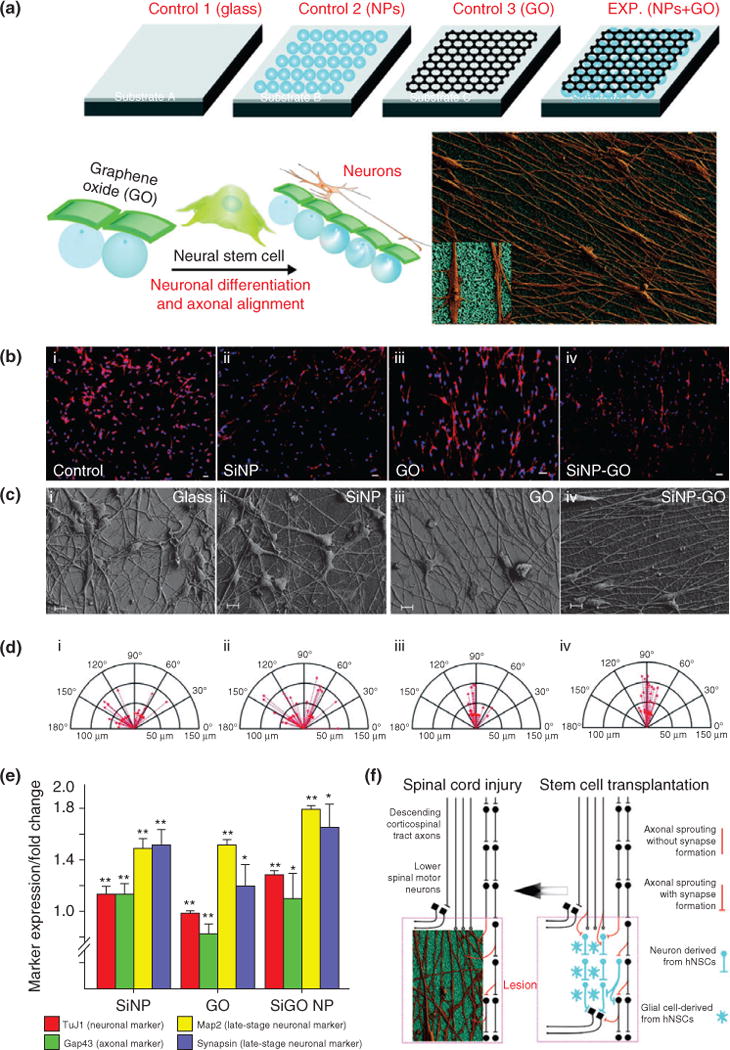FIGURE 12.

Axonal alignment and enhanced neural stem cell (NSC) differentiation on graphene–nanoparticle hybrid substrates. (a) Schematic diagram depicting the influence of nanoparticle (NP) monolayers coated with graphene oxide (GO) on the alignment of axons extending from human NSCs and their differentiation into neurons. (b–d) Aligned growth and extension of axons from differentiated hNSCs, and the compass plots showing the variation in the angle of orientation and length of axons. (e) Quantitative gene expression results for early- and late-stage neuronal markers expressed by the hNSCs differentiated on the different substrates, with the nanoparticle-hybrid condition having the maximal influence on expression of neuron-specific genes. (f) Scheme depicting the significance of alignment and growth of axons from differentiating hNSCs. The hNSCs that can be transplanted into the injured region (lesion) of a spinal cord differentiate into neurons and glial cells (image on right). The axons from the neurons (derived from hNSCs) if aligned can hasten the recovery process. Our SiNP–GO hybrid structures can provide the ideal microenvironment to align axons that could potentially improve communication leading to rapid recovery of the injured spinal cord (image on left). (Reprinted with permission from Ref 77. Copyright 2013 John Wiley and Sons)
